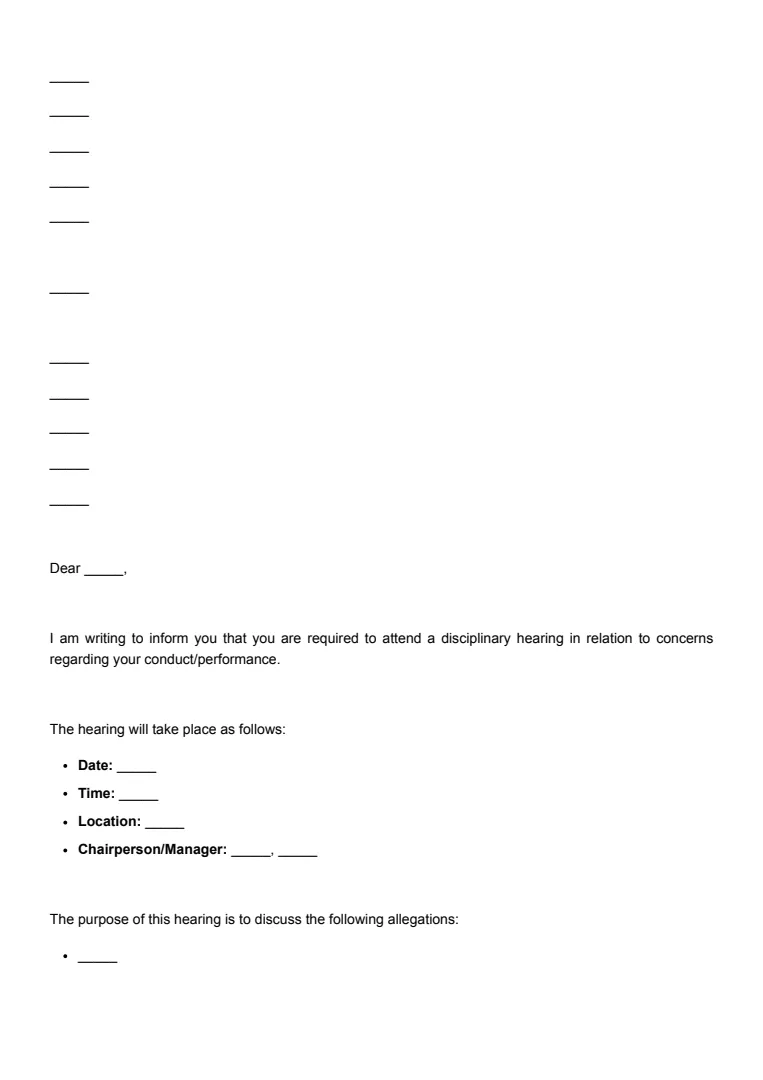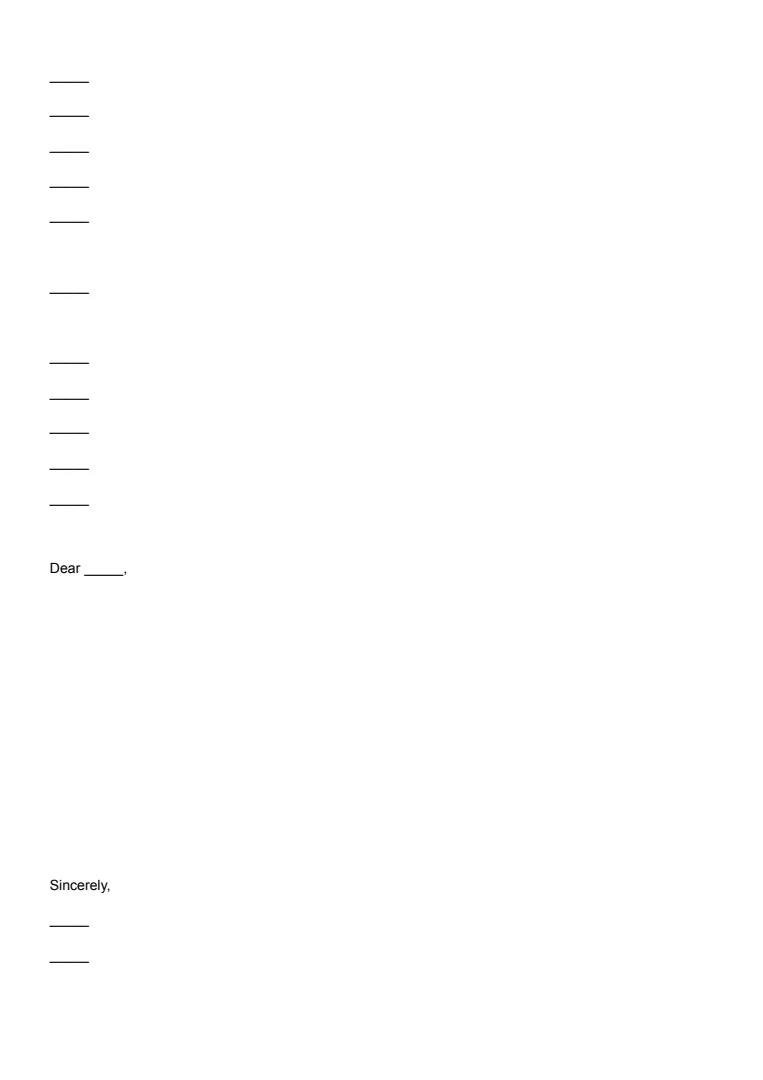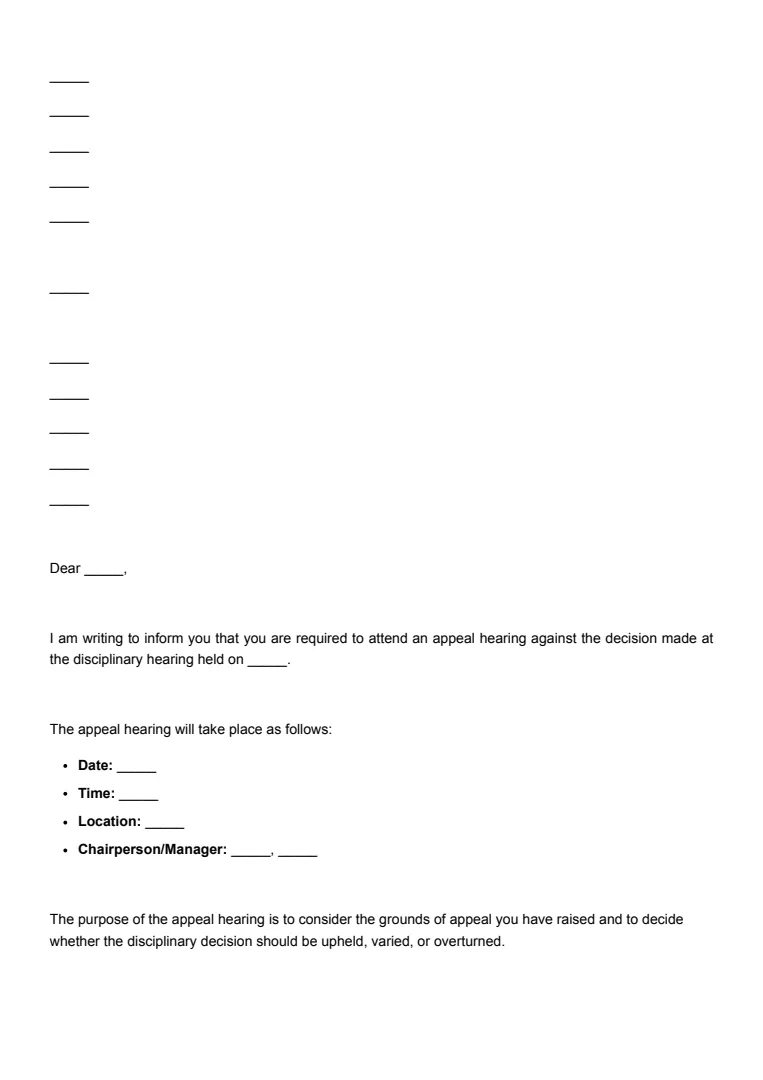What Is a Disciplinary Letter?
A disciplinary letter is a formal document you might receive at work when your employer needs to address a behaviour, performance, or conduct issue. It’s a way for your employer to outline what happened and what action is being taken.
Typically, disciplinary letters will cover these points:
- The specific issue or incident: what happened and when
- Reference to previous warnings (if applicable)
- Expected improvement and time frames
- Potential consequences if things don’t change
You could get a disciplinary letter if you’re late to work repeatedly, don’t follow company procedures, or have been involved in a workplace disagreement. Sometimes, it’s for a single serious event; in other cases, it’s about ongoing issues.
A disciplinary letter doesn’t always mean you’ll lose your job straight away. Often, it’s a warning and a chance for you to improve before stronger action is taken.
You’re also usually given the right to respond or explain your side.
When Is a Disciplinary Letter Needed?
If you’re an employer, you’ll need to send a disciplinary letter when an employee's actions or performance reach a point that can't just be handled off the record. It's there as a formal step, usually after earlier discussions haven't fixed the issue.
Common situations where disciplinary letters are needed include:
- Repeated lateness or unauthorised absence
- Failure to meet the required standards of work
- Breach of company policies
- Misconduct, such as inappropriate behaviour at work
- Health and safety violations
For employers, a disciplinary letter serves as written evidence that they've initiated a fair process, which is crucial if further action becomes necessary. It's not just about telling someone off; it's often required by internal policies or employment law before moving forward with warnings or dismissal.
You might also send a disciplinary letter if you believe the employee's conduct could put others at risk, or if there has been a clear breakdown in trust.
If it's a first offence but serious enough, sometimes skipping straight to a letter is justified.
It's usually best to use a disciplinary letter once informal chats or reminders haven't solved the problem. That way, everything stays clear for both you and the employee about what’s expected.
How to Write a Disciplinary Letter
Creating a clear disciplinary letter is essential to ensuring that misconduct or performance issues are formally documented, expectations and consequences are clearly recorded.
Here’s how to create a letter of disciplinary action that protects both parties from potential legal disputes in the future. It’s also useful to use a sample disciplinary letter or discipline letter template to guide you.
Step 1: Start With Basic Information
Include all the essential details at the top of your letter:
- Date
- Employee’s full name
- Job title
- Department
This ensures the document is clear, formal, and easy to file or reference later.
Step 2: State the Purpose of the Letter
Open with a brief statement of intent. Clearly state that this is a disciplinary letter, and reference any prior steps, such as a verbal warning.
This context shows the employee that the issue has been addressed before and is not sudden.
Step 3: Describe the Incident or Behaviour
Lay out the specific incident or behaviour that led to the disciplinary action. Be as factual and specific as possible and include dates, times, and a description of what occurred.
Attach supporting evidence such as emails, incident reports, or witness statements.
Step 4: Reference Relevant Company Policies
Explain which company policies, procedures, or expectations were violated. Be direct and link the breach clearly to the documented incident.
Avoid using emotional language or speculation; stick to the facts.
Step 5: Set Clear Expectations for Improvement
Outline what you expect from the employee moving forward. Include details of any performance improvement plan (PIP) or set specific, measurable goals.
If applicable, include a timeline for achieving these targets.
Step 6: Describe the Review and Follow-Up Process
Explain how the situation will be monitored and reviewed.
Let the employee know:
- When their performance will be reassessed
- Who will conduct the review
- What will be the consequences if there’s no improvement
This could include further disciplinary action or potential termination.















